22nd November 2021
The Spokesmen Cycling Podcast
EPISODE 287: Chris Froome and Hammerhead CEO Pieter Morgan
SPONSOR: Jenson USA
HOST: Carlton Reid
GUESTS: Chris Froome and Pieter Morgan
TOPICS: Chris Froome’s investment in Pieter Morgan’s Hammerhead.
LINKS:
TRANSCRIPT:
Carlton Reid 0:14
Welcome to Episode 287 of the Spokesmen cycling podcast. This show was engineered on Monday 22nd of November 2021.
David Bernstein 0:25
The Spokesmen cycling roundtable podcast is brought to you by Jenson USA, Jenson USA where you will find a great selection of products at unbeatable prices with unparalleled customer service. Check them out at Jensonusa.com/thespokesmen. Hey everybody, it’s David from the Fredcast. And of course, I’m one of the hosts and producers of The Spokesmen cycling roundtable podcast since 2006. For shownotes links and other information, check out our website at the-spokesmen.com. And now, here’s my fellow host and producer Carlton Reid and the spokesmen.
Carlton Reid 1:10
There probably won’t be any Froomey branded bikes but Chris Froome is clearly thinking about his bicycling life after he retires from the pro peleton. I’m Carlton Reid and on today’s show I talk with the four-times Tour de France winner about one of his several bike industry investments. Along for today’s chat was Chris’s school mate Pieter Morgan who co-founded the bike tech company, Hammerhead.
Carlton Reid 1:10
Hammerhead’s Karoo 2 cycling computer was designed and developed during the pandemic and has experienced strong sales since it launched last year. Chris Froome isn’t the only maillot jeune wearer to have invested in Hammerhead, although he’s the only one that’s still officially got the jerseys. The company has so far raised $14 million in seed funding half of that from Next Ventures, a sports and wellness investment house co-founded by ex-Nike executive Mel Strong and a certain Lance Armstrong. Let’s hear from Chris and Pieter…
Carlton Reid 2:20
So Pieter, I want to start with you. I’m imagine I’m a prospective investor, not necessarily as tech savvy as Chris over there, but give me your elevator pitch on your company. And perhaps you know, the halo product, Karoo 2?
Pieter Morgan 2:38
Sure. Well, I’m excited to be chatting to you guys today. And you know, I think my perspective for a long time has been that if you look at the bikes of today, the physical bicycle, the technology that goes into it is really outstandingly cutting edge, whether it’s aerodynamics, or material science, or, you know, the way that they’ve been able to create something is spectacularly light to some of the performance bicycles of today. But the thing that’s always been extremely absent, in my opinion, or at least lagging in technology has been the digital experience on the bike. So if you look at the world of cycle computers today, the majority of them use technology that’s very antiquated. And they certainly don’t resemble a lot of the other digital products that we’re getting more and more accustomed to in our lives. So if you look at the, certainly the digital experience, and let’s say, a Tesla car, or, obviously the iPad and its ecosystem, it really is a much more modern and capable and powerful digital experience. And so my view has been that by bringing a more modern, powerful, capable digital platform to the bike, there’s a huge opportunity to use the software then to solve a lot of the most important and challenging problems for cyclists. And you know, one area, for example, is in Maps Navigation. So by building a computer that’s as powerful as ours is, we’re able to start to deliver much more insightful and powerful maps navigation experience, which ultimately put cyclists on much safer routes. It allows cyclists like Chris, who are racing in major races to start to get some insight around the road ahead. So upcoming climbs and elevation and things like that. And so where we are in the journey is we’re building this computer we have recently shipped it, I guess earlier this year, we started shipping, the crew two, which is the current generation. And we’re really excited about the fact that we see a huge future of software and functionality that we are currently working on and currently building so we’re shipping software every two weeks. We have some really exciting features and functionality coming down the pipeline and and really excited about it all. So I’d say that’s the the story in a nutshell.
Carlton Reid 4:46
I’ll have to turn mine back on to it must have been a good week ago since I’ve been I’ve been using it so turn it back on I might get some updates. That’s cool. Chris, you are investor. So tell me why did you invest and also perhaps, what the Karoo actually does for you that maybe other GPS handlebar devices don’t.
Chris Froome 5:12
Right? Yeah, um, I think first
Chris Froome 5:14
and foremost, just taking a step back. I mean, obviously I’ve had had a decent length career in cycling. I’ve been a professional for the last 13 years. And I’ve always, almost almost continuing on from what Piet was saying, I’ve always felt that it just doesn’t make sense that the information we’re getting on the head units and basically how the head units display the information has been basically instilled in the stone age’s. When everyone’s got smartphones, everyone’s I mean, the technology does exist out there. And it just doesn’t, hasn’t until now hadn’t been transferred into that, like into the cycling market. So I think when when when I first saw the crew to launch, first got my hands on it started using it, I was just I was blown away, I was just like, this is a completely different experience from from anything else I’d used on the market. And I think that’s when I wanted to get more involved with the company. I mean, just it started off I guess from from a team point of view, making the introduction to isn Israel startup nation. Where Hammerhead now who Hammerhead now has a relationship with and obviously they supply all our all our head units for racing. But then more than that, I wanted to be involved in giving feedback, giving them basically the information of exactly what we wanted to see, while we’re on the road racing and training, obviously. And I think that’s, that’s where discussions sort of picked up about how I could get more involved in the company. And yeah, I mean, there was there was an opportunity for me to to invest and that was, yeah, I mean, I think I jumped at it. I felt felt as if it was a great match. I mean, I I do love my my tech my I love my equipment. I love tech I love I love everything to do with riding a bike and if it’s if it’s if it’s going to help help the cause
Carlton Reid 7:30
You like looking down at your handlebars, you’re kind of famous for ‘what’s Chris looking at now’ ‘oh, he’s looking at stats and stuff.
Chris Froome 7:41
So that’s a bit of a misconception. Yeah, I mean, I think I’ve got quite rounded shoulders. So naturally, my gaze is just in that direction. It’s not that I’m actually staring at anything. But I mean, it does help obviously having good information to look at then it does give me something to look at. But it’s, I find it actually quite uncomfortable to lift my head higher. So it’s, yeah, a little little misconception there.
Carlton Reid 8:07
Oh, right. Okay, that’s news to me. Thank you. And then Pieter, tell us about how you started this company. Because it’s it’s a bike ride across America. With your your business partner. Now, Lawrence. So what were you in Lawrence doing riding across America for a start?
Pieter Morgan 8:24
So yeah, so certainly the I’ll start a little bit before that even and then I’ll get to that story. So I grew up in South Africa, as I think you may know. And Chris and I actually went to high school together in Johannesburg. So we had known each other from Johannesburg, and the high school kind of cycling club, if you will, so. So my love for cycling, it goes back a very long time. And I came over to the United States for university. And it was actually one summer then in college when I rode from New Haven and on the east coast of the United States to San Francisco. And Lawrence actually wasn’t on that ride. He came to the States a little bit after that, but that ride was was really quite informative for me, because I spent 63 consecutive days on the bike, you know, riding across the states, we took a very roundabout route, if you’re trying to figure out why it took me so long. But, but it was a it was really a spectacular trip, I think we averaged a little bit over 100 ks a day. So nothing too crazy, but a fair amount of riding. And it was during that experience that I was struck by just how important it is to get navigation rights on the bike the trip, tragically, actually. So the trip actually took place, I think for two or three years. And there actually, I think two people killed on the trip, you know, in accidents with vehicles, which obviously was very tragic. And you know, that experience combined with just my own challenges of, you know, some days finding ourselves on interstate highways and you know, places that aren’t optimised for cycling really left me with this profound sense of just how important it is. To solve navigation for cyclists, and that then became obviously a broader mission now with a crew computer. And Lauren’s my co founder, actually went to the same high school that Chris and I did in South Africa. And he had come over to the United States for graduate school. And fortunately, he and I had complementary skill sets. So he also was a passionate cyclist, and we joined forces moved into a small house together and started building the first product. So we jumped right into it and, you know, have been able to, I guess, build on early successes and you know, get to where we are today.
Carlton Reid 10:34
Can I ask a really techie, non-cycling techie question here? And that is mapping. Why in the UK, and I’m sure everywhere else, it’s perfect. But why in the UK, do you not use OS mapping?
Pieter Morgan 10:47
So it’s interesting, the so dependent obviously, mapping around the world is quite idiosyncratic meaning each country has its own. Its own mapping realities and a country like, certainly your city like London, let’s say the roads are obviously very ancient and very, very higgledy Higgledy Piggledy, as a result, as compared to say, a city like New York, which is much more of a grid pattern layout. So each, each city has its own idiosyncrasies. There’s obviously also a variety of different data sets that are either good in one country, but might not be good another. So if you look at say, the Waze product for certainly car navigation, it performed spectacularly in some regions, and will outperform Google Maps in some areas, whereas in other countries, it will really not know where it’s going. And so we have the same reality in terms of our product, we are using the OSM base map globally, although that is, you know, and that’s the open, you know, open street maps product as the base dataset. But what we’re doing on top of that is then, essentially developing our own data set that will allow us to over time, provide a more and more insightful and accurate set of guidance for cyclists, our expectation is much like Waze, we will start to leverage the insight of the community both through heat maps, so where people tend to ride, but also through active input. So people essentially giving us feedback on you know, what roads might be good or what roads aren’t good, and then incorporating that into the guidance. So. So it really is, you know, in some cases, in some countries, I’d say it’s, it’s outstanding today. In others, it’s a little less accurate, but I will say that holistically, I think it is the the finest product from a cycling navigation perspective on the market today, but certainly a lot more that we’re working on.
Carlton Reid 12:35
So I’ve got more questions for Chris as well. But I’m ready to dig down into this one. And so okay, not Oh, yes. But what about OpenCycleMap, Open Street Map? Surely, that’s open to everybody?
Pieter Morgan 12:48
Yes. So that is what we’re using as our base status as the challenge then obviously becomes taking a dataset like that into developing it into a, you know, accurate navigation product in real time on a bike because as soon as you take it onto the bike, it obviously doesn’t have a native internet connection. So everything you’re doing, you’re doing offline on the device itself. So that means there’s a large storage problem there of needing to essentially store map tiles, which are the visual representation, in addition to the underlying street network data or trail network data. So we are using that data set. And then the I guess, the technical work that we’re doing on our end, because to your point, it is an open source dataset is were then building on top of that, you know, essentially navigation algorithm, we’re packaging it and storing it in a quite a unusual and I think, effective way, and starting to inform that dataset with our own insights. And that’s something that will increasingly happen over time.
Carlton Reid 13:47
Hmm. Okay. Because that would have been kind of my wish list. If you had to come to me, I’m, I’m not anyway, could be described as an athlete. But if I had just to use abilities, like, you know, when I’m using an iPhone app, then it’s just nice to be able to switch to the the map that you kind of comfortable with, and that can be at different stages of a, you know, a rural versus a city journey, just to be able to just switch out the map. And anyway, Chris, let’s come to you. So there are Hoy bikes. You can’t move in the UK without falling over blummin’ Boardman bikes. So any interest in having a Froomey bike brand or Froome Bikes or something something with your name on it?
Chris Froome 14:30
Not no plans in the near future? That’s, yeah. Recently this year, I got involved with another sponsor of the team actually. Factor, Factor. Yeah. Also a British band. But yeah, certainly no plans at the moment to to get involved in any sort of public transport schemes. I mean, there’s there’s a lot out there already. But yeah, no, no plans for the moment.
Carlton Reid 15:00
Okay, so you’ve invested in other companies? Are you looking to get more hands on in the future with those investments that you’ve made, you know, not not just, you know, with your technical prowess, but business, you know, actually try and do something different in the world of cycling. With your business skills.
Chris Froome 15:23
I mean, I’d like to think obviously, as, as I get closer to the end of my career, I could potentially get more and more involved with with the companies that I’m invested in. I mean, obviously, I bring a lot to the table in terms of actual usability of the products and feedback and product development. But I have to say that the business side of things is completely foreign. To me, that’s a whole new field that that I’m hoping to learn more about, by having these investments and being involved in, for example, quarterly quarterly board board calls. And certainly something I think beyond my cycling career, beyond my cycling career, something that I could be more involved in.
Carlton Reid 16:11
Okay. And Pieter, you’ve just re-signed? You mentioned it before, but you just re-signed a deal with Israel Startup Nation. What does that do for you? Because when we you founded? 2013, 2014? So what does that do for you, as a company as a relative newcomer in this space?
Pieter Morgan 16:32
So it’s, it’s done a tremendous amount for us, I think, the guidance that we’ve gotten from Chris and folks in the team has been extremely helpful. When we develop the climber feature, which shows the insight into the upcoming climb, we certainly leveraged a lot of insight from Chris and his team. And their insight certainly enabled us to make a much better feature than would have been possible without it. So I think there’s a huge value in the insights that we get from from Christ and his teammates, I think beyond that, there’s an awesome testing environment that it exposes us to so having the product on all of the ISN bikes in all of the races, does put it through its paces to an extremely high degree. You know, we were watching the Paris-Roubaix race relatively recently. And that was obviously quite a wild one with, you know, the conditions of the day. And it was super cool to see the product in that environments going through it and ultimately surviving to get through to the other end. So I think there’s a huge testing aspect to it too, which allows us to, you know, identify anything that needs to be improved on the product, as well as inform our development of subsequent product. So that’s, that’s also huge. And I think the third piece that’s most exciting, or probably perhaps most enjoyable, is it’s just deeply gratifying to see our product being used at these these levels of the sport, I know that our team is certainly enthusiastic about cycling. And, you know, they were watching very closely when, for instance, Mike Woods was competing for the kingdom mountains, Jersey, with the crew and his handlebars. And that was getting a lot of coverage in the Tour de France this year. And so there’s just a huge, you know, amount of, I guess, pride that comes from doing work that ends up at the highest levels of the sport. So it gives us a tremendous amount, I do hope that we are able to give as much back to the team. But we certainly feel we get a tremendous amount from the relationship.
Carlton Reid 18:25
I love the climber feature, I thought I would hate the climber feature. Because it’s telling you what’s coming up. And I’ve got I’ve got all these hills to do. And then when I’ve used it, it’s like, I love knowing exactly where I am on the ascent that that actually improves my, my enjoyment, because I’m not, I’m not getting to fall flat and then thinking, Oh, I’ve done it. It’s like, No, I know, this is a false flat. And psychologically, I find that incredibly useful. Chris, was that something that you helped develop the climber bit?
Chris Froome 18:56
I was just gonna say ‘welcome, welcome to my world’. Going up some random climb in the Pyrenees that you don’t know if the false flat is actually the top or if it carries on or anything else. I mean, obviously, having having that kind of information right at your fingertips, knowing exactly how far it is to the top of the climb, what kind of gradient you’re doing, really helps you mentally to sort of put a little, I guess, checkpoints on the way up the climb. Little points where you can see you get a little breather, for example. And you can kind of just tell yourself mentally okay, if I can just hang in to that point, I’ll recover a little bit then I’ll be okay for the last last little bit. So I mean, it’s it’s incredibly important having that information. And that was something that I personally had had quite a lot of input into, I think, in the in the first few months of the building up to the Tour de France.
Carlton Reid 19:51
Well, thank you for that because that is my favourite feature. Now do you use it in a race? Because presumably when you’re doing an incredibly famous Tour de France climb, you pretty much know every single inch of that climb, and you’ve recce’d it many, many times. But do you still potentially look down at the Karoo, even when you know it inch by inch?
Chris Froome 20:13
Yeah, definitely, I mean, almost going back to, to what what we’re just talking about now is even though you know, a lot of the roads, and I have to actually tell you that we don’t know, most of the roads that we race on, I mean, we might know, for example, afterwards, or some of the more famous claims that you do sort of every every second year or something like that. But there are a lot of new claims that we don’t know, and we just don’t have the time to go and record all 21 stages. So there’s a lot that we don’t know. But even even when you do know it, it just sort of helps mentally to be able to see it in front of you and to see see the little little bits of respite or to at least prepare yourself if there isn’t any respite coming up and you can just just crack on with it.
Carlton Reid 21:02
And Pieter, is they those datasets, the with the inclines on that’s all you can you can suck that up pretty easily. How accurate are those those things on the Karoo, the inclines?
Pieter Morgan 21:16
So yes, so we take the the data, obviously, that exists. But what we have done is we’re starting to get into cross referencing it with other data sets. So instead of let’s say, just taking the OSM elevation data, we’re starting to, to combine that with data sets that might confirm or you know, indicate that there’s an error in the in the first dataset. So there is some complexity in doing that. And I think there’s, you know, you certainly will notice, in some cases that the data is slightly wrong. So for instance, where I write frequently in New York, if I go over the, the George Washington Bridge, yet, you know, represents me is riding, I think, on the level of the river, which obviously isn’t entirely true, but it’s either get some idiosyncrasies like that, that are inaccurate, but generally speaking, it’s pretty accurate that will only get more accurate over time, because what ultimately we will do is corroborate the dataset with the GPS positions of the riders and, you know, then adjusted over time. So it starts to become a much more like Waze dynamic and tuned data set if you want to put it that way. Hmm.
Carlton Reid 22:21
Okay. And, Chris, I believe you’ve just paid your first visit to Israel.
Chris Froome 22:26
Correct. Yeah.
Carlton Reid 22:28
So how was that?
Chris Froome 22:29
Amazing, actually quite, quite educational being being over there. I mean, for most of us, all that we see of Israel is when when when it when it reaches the headlines in this there’s normally a bomb going off somewhere or some some tragic event. So I think we have quite a warped perception of what what Israel is actually like, being there with the team this time around. It was, I mean, I was I was there in 2018 for the start of the Tour d’Italia. But to be honest, we, when you’re in race mode, you go from your hotel room, onto the bike back to your hotel room, to the dining room. You don’t you don’t go out and walking around or getting to experience the city at all. So this time was was was definitely the right time of year that we went there. And we were able to go on all the all the different sort of tours of the system.
Carlton Reid 23:24
Do you think, of course, of course, because I should have known that because I was actually there on that. So I was actually watching in fact, I was with your Factor guy on the first. Yes, Rob was was showing us around on that particular stage anyway. So where do you go in Israel? I’ll tell you why. I’m asking this. I wrote the Berlitz Guide to Israel. So I I’m very familiar with Israel. So okay, so where did you go?
Chris Froome 23:49
So we started off in Jerusalem a few days a few days, looking around the city learning about the different the different quarters of the old, old, old city went to went all the different sort of attractions. We went to I think we went from there. Then we went down to Tel Aviv did some of the sort of more touristy things down there sort of tour of the food markets and Jaffa to learn learn a bit about Jaffa and the old port in Tel Aviv. And we went to the Sea of Galilee for a couple of nights where they’ve just just hosted the first Ironman event which that that was fascinating, actually quite nice cycling up there as well. That’s right on the border of sort of Syria and Jordan. And that was that was fascinating as well. It’s got its own history up in that area. We did a few team building events around there for going to right down the other side to the Dead Sea where we did some mountain biking. And then then we finished off the trip with going back to Tel Aviv.
Carlton Reid 25:23
And that sounds like a great trip. You’ve you’ve done. I mean, it’s a very small country, obviously. But you’ve done a tonne there. So, what was Sylvan [Adams] there? What’s it like to have a world champion as a team owner?
Chris Froome 25:36
Pretty, erm. Yep. I mean, the thing is, he obviously gets he gets cycling. I mean, he’s, he’s been a world champion himself. He gets training, he gets nutrition, that whole side of things as well.
Carlton Reid 25:48
So does he half-wheel you?
Chris Froome 25:51
He does, he sort of lets lets it known that he trains, that he’s fit. Yeah, especially when we’re all unfit. And we haven’t been training. But no, it’s it’s actually really good fun having a team owner who, who gets involved as much as he does.
Carlton Reid 26:13
Like, I mean, that’s why he created or co-created the team, of course, to, to explain that this is a startup, literally a startup nation. And as you were saying before this, you know, it’s not a bomb around every corner. Look, look at Liverpool, you know, we had a bomb, you know, just two days ago. So Israel was not what people read it in the news, but he also is doing lots of stuff for cycling in the country itself. So there’s, there’s a velodrome with his name on there’s there’s bike networks in Tel Aviv, did you go on any of the Sylvan Adams bike network?
Chris Froome 26:45
I did not actually get to see that. Maybe it sounds like you know more about that than me. What, what was that about?
Carlton Reid 26:50
I won’t go into the full details cos he is a bit cheesed off with the municipality because they haven’t been as fast expanding the network. So he seed funded it. He gave them you know, a fair bit of cash. They then named the network after him. So it radiates from where he lives, basically down to Tel Aviv. And then he expected them to then massively expand it and they haven’t. So the last time I spoke to him, he wasn’t that happy with with the Tel Aviv mayor, that maybe don’t go into that. But, I mean, it’s just doing so much for cycling. And of course, the team is this massive PR drive, not just for sports side when you’re involved in but but all different aspects of cycling. So he’s really interested in cycling as a whole.
Chris Froome 27:40
He is He is, I mean, we did get to go and see certain projects that he’s been involved in down there. You mentioned one of them the Velodrome, for example. I mean, just just fascinating, because it wouldn’t have had facilities like that. If it weren’t for his involvement, and now having obviously a pro tour, World Tour teams are an Israeli well to a team, it gives all the youngsters a little bit like what what teams guided for, for British Cycling 10 years ago. So it’s, it is this sort of, it’s this vehicle now that it says to up and coming young, young, aspiring cyclists. If you guys are good enough, and you put in the hard work, this is where you can, this is where you could end up and I think we I was blown away just by how many people came out to come and sort of show their support? And how many how many kids are actually into cycling over there in Israel? I mean, that’s really good. I don’t think that would have been possible if it hadn’t been for his involvement.
Carlton Reid 28:45
Hmm. Do you? Have you met Ran Margliot? Do you know Ran?
Chris Froome 28:50
Yes, yes.
Carlton Reid 28:52
Because he’s, I mean, he’s still across there at the moment. I mean, he obviously the the team before it became Startup nation was built, you know, around a little bit of a kernel that he you know, started with his his his partner because he was the first Israeli pro team rider really, it wasn’t he was like, so he a lot of it can come from from him even before Sylvan was doing stuff with pro teams. So he’s been a big catalyst in Israel.
Chris Froome 29:20
Certainly, certainly.
Carlton Reid 29:23
Pieter, let’s go back to you. Do we have any more tech stuff to come you can you give me any any secrets here? Have you got any? You know, you’re talking about the updates before what what updates have you got to the software? That kind of stuff? Give me, give me some give me some tech secrets.
Pieter Morgan 29:38
Sure. So I think one of the things we’re really excited about shipping in the next couple of weeks is really a big update to the operating system visual. So if you’re familiar, obviously with the iPhone platform, when it goes from say iOS 14 to iOS 15. That brings with it a lot of fun, you know, visual improvements. A lot of the time, and we’ve got a similar release coming before the end of the year, which we’re really excited about. And that brings a new control centre to the product we’re calling it which is essentially a, you know, menu structure that allows one to navigate the product much more easily. And we’re also shipping a really nice update to the to the desktop, if you want to call it that the sort of homepage, visualisation. So it’s gonna make the product feel and look totally new, which is really exciting. And I think, you know, much more polished than it currently does. So I think that’s a release that’s coming before the end of the year that I’m really excited about. We have gotten great feedback from some of the folks in our advanced testing group on that. So we ship software to a variety of advanced testing people about two weeks before we ship it to the general public and, and they’re busy testing that as of Thursday last week, and that’s certainly been very well received. So I’d say that’s a big one. That’s shipping soon.
Carlton Reid 30:57
Any hardware stuff. So anything new on the, you know, Karoo 3, maybe?
Pieter Morgan 31:03
So we, we certainly are always working on hardware stuff in the background, but we don’t have anything launching too soon. The Karoo, the Karoo 2 is still relatively early in its lifecycle that we only started shipping it in, I think February or so of this year. So trying to it’s been, it’s a relatively new product. But now we’re certainly working on future products and some exciting partnerships that we’ll be able to announce going into next year.
Carlton Reid 31:30
Thanks to Pieter Morgan of Hammerhead there and thanks also to Chris Froome and to you for listening to Episode 187 of the Spokesmen cycling podcast. And that’s it for this month. There will be another couple of shows in December but meanwhile, get out there and ride …
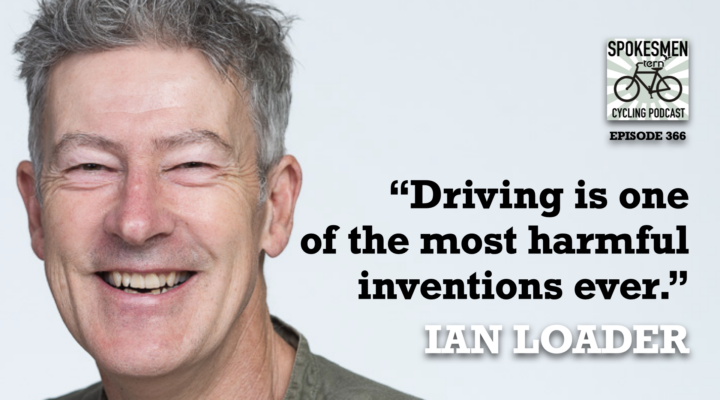
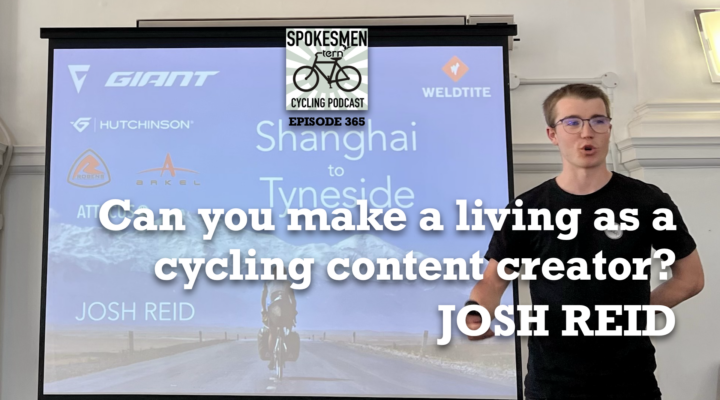
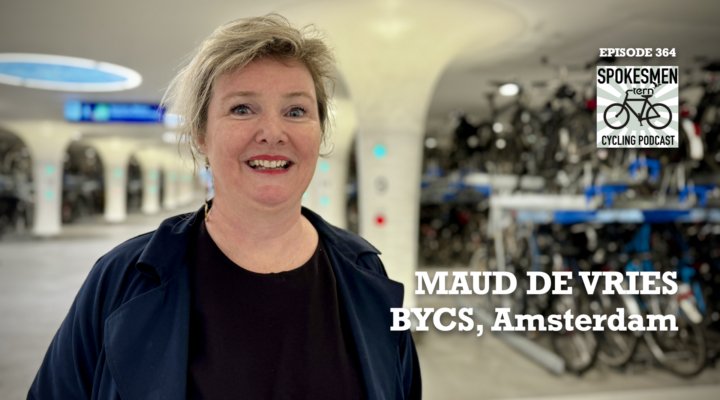
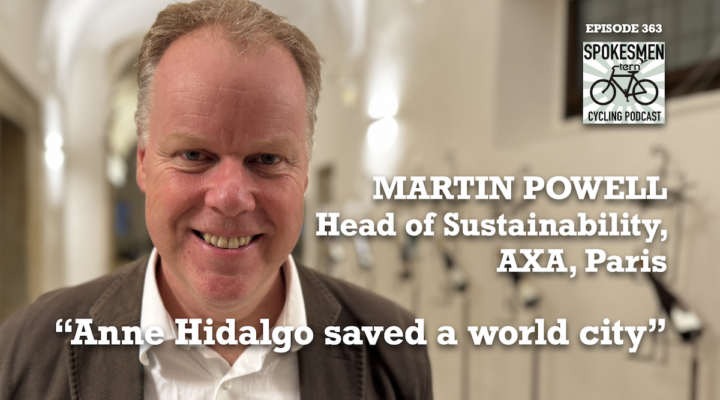
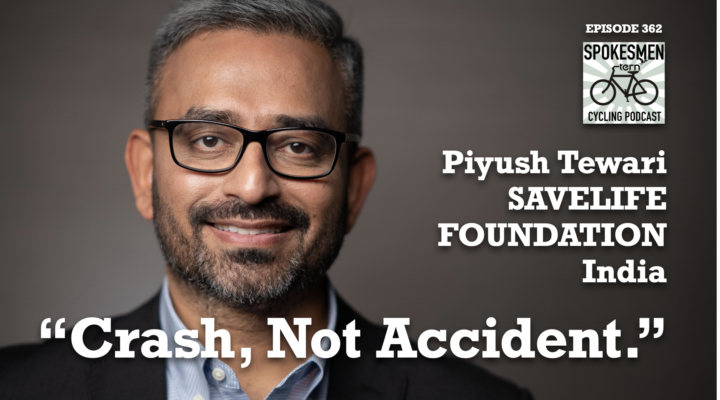
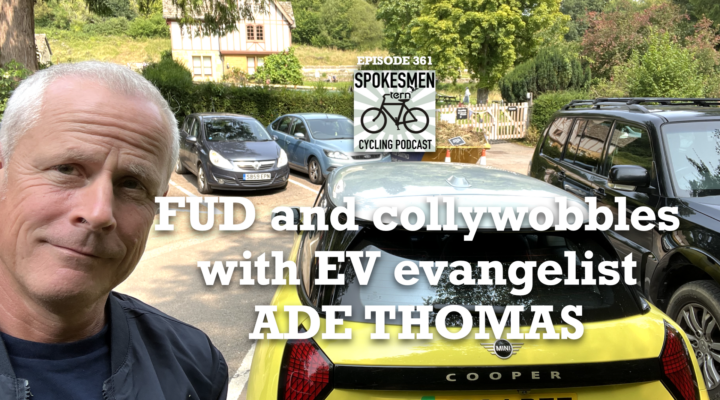
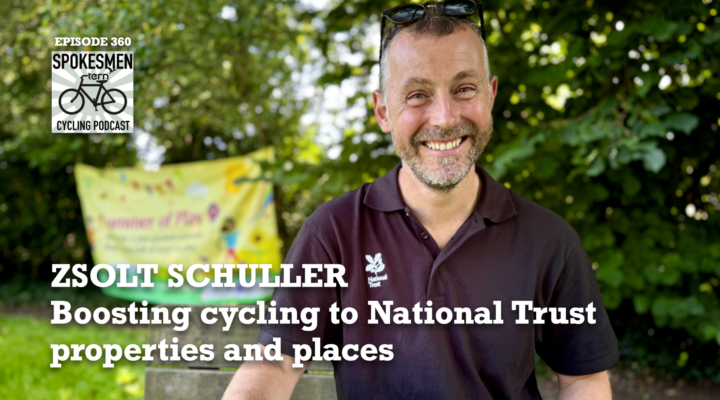
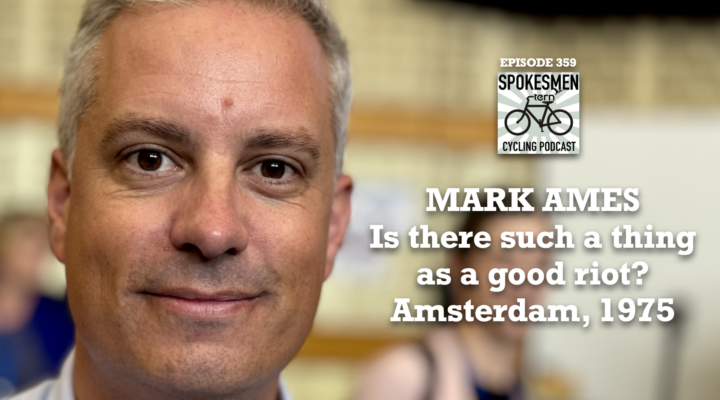
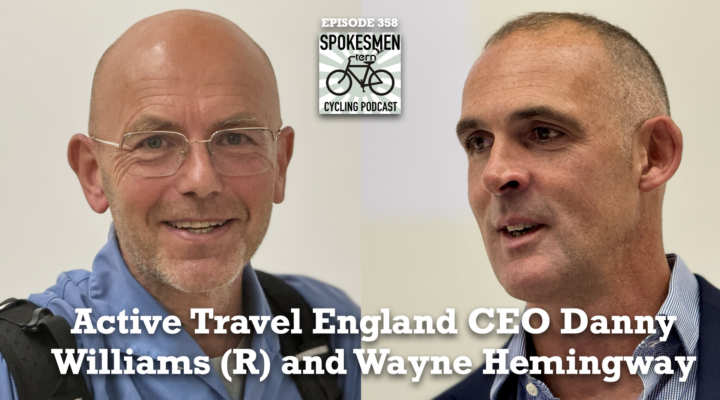
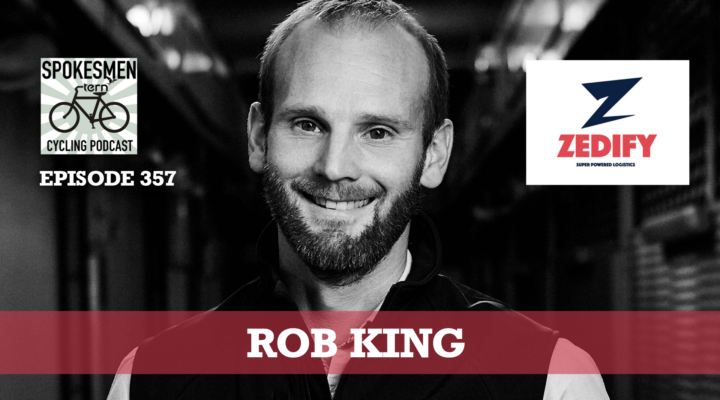
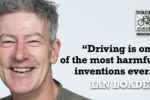
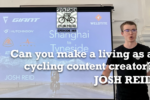
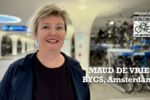
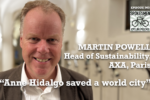
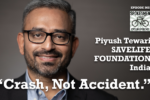
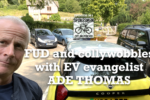
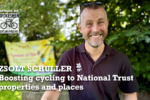
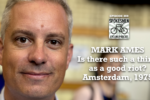
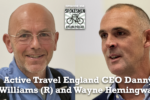
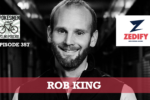
Be First to Comment